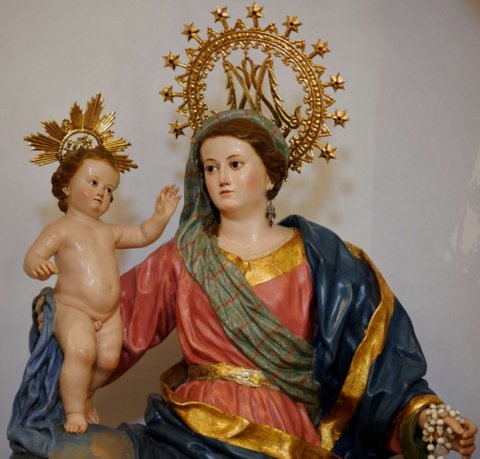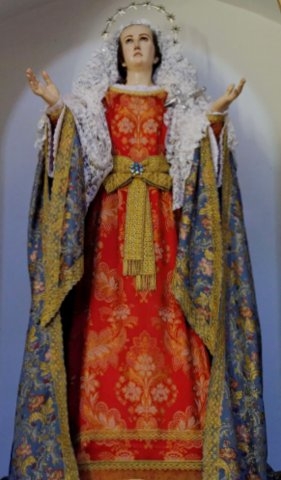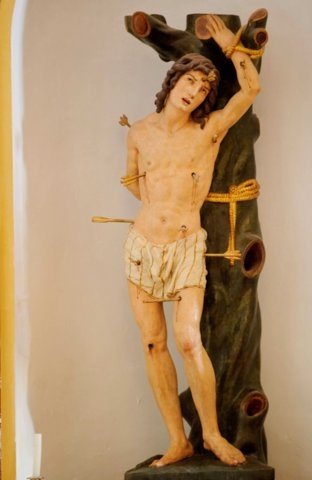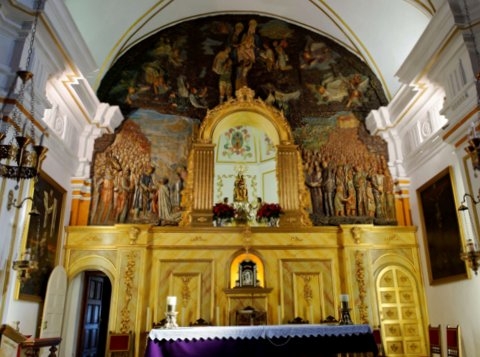

Guidelines for submitting articles to Hacienda Riquelme Golf Resort Today
Hello, and thank you for choosing Hacienda Riquelme Golf Resort.Today to publicise your organisation’s info or event.
Hacienda Riquelme Golf Resort Today is a website set up by Murcia Today specifically for residents of the urbanisation in Southwest Murcia, providing news and information on what’s happening in the local area, which is the largest English-speaking expat area in the Region of Murcia.
When submitting text to be included on Hacienda Riquelme Golf Resort Today, please abide by the following guidelines so we can upload your article as swiftly as possible:
Send an email to editor@spaintodayonline.com or contact@murciatoday.com
Attach the information in a Word Document or Google Doc
Include all relevant points, including:
Who is the organisation running the event?
Where is it happening?
When?
How much does it cost?
Is it necessary to book beforehand, or can people just show up on the day?
…but try not to exceed 300 words
Also attach a photo to illustrate your article, no more than 100kb

The church of Santa María Real in Aledo
La Iglesia de Santa María Real
The Iglesia de Santa María Real is built on the location of a former Muslim mosque and consists of just a single nave and a tower. In the Middle Ages it was common for the incoming Christian forces to make use of existing buildings which had been built by the preceding Muslim population and the first Christian activities took place in this formerly Muslim place of worship.
 This building became a Christian chapel when Aledo was given to the Christian Order of Santiago in 1257 following the Reconquista and surrender of Tudmir (which is now roughly the Region of Murcia) in 1243 (see History of Aledo).
This building became a Christian chapel when Aledo was given to the Christian Order of Santiago in 1257 following the Reconquista and surrender of Tudmir (which is now roughly the Region of Murcia) in 1243 (see History of Aledo).
It is not known how much the existing structure was amplified between this date and 1761, when the present building was constructed, but it seems likely that this could have happened due to the importance of the sculptures it contained and of the Order of Santiago. Unfortunately, all documentation relating to the former church has disappeared, as the former building was demolished completely for the new one to be built.
 The disappearance of the documentation could have been due to the total transfer of the parish to Totana. Aledo became depopulated once the Reconquista of Murcia was completed and the Moorish rulers of Granada had been defeated, as important strategical fortresses of little use in a more secure society, and the population of Aledo moved down into the richer agricultural plains of Totana.
The disappearance of the documentation could have been due to the total transfer of the parish to Totana. Aledo became depopulated once the Reconquista of Murcia was completed and the Moorish rulers of Granada had been defeated, as important strategical fortresses of little use in a more secure society, and the population of Aledo moved down into the richer agricultural plains of Totana.
In 1583 the priest, Francisco Sánchez, went into Totana with his parishioners, saying that Totana had a population of 500, whereas in reality Aledo was home to only 100 to 150 people, and that he was better placed to fulfil his ministerial duties by moving to Totana. In 1553, the Pope officially authorised the Order of Santiago to move down to Totana as well.
In 1745 there are records showing that the existing chapel required modification and repairs, and work began in 1761 to build theexisting church although lack of money meant that it was not completed until 1803. By the end of the century restoration was already required and funding was obtained by the Marqués de Aledo from the Government. The work was completed in 1904.
The current church is in the barroque style with neoclassical finishing touches, consisting of a simple Latin cross design with 3 naves separated by pillars. In spite of the simplicity of the building, it contains some extremely important sculptures:
Santa María La Real, patron of Aledo (sculptor unknown, 16th century)
 The figure of Santa María La Real is an early 16th century piece, carved in walnut with polychrome finishing. It has a hollow interior accessed via a small door painted with an eight pointed star, meaning that it was used as a reliquary at some point.
The figure of Santa María La Real is an early 16th century piece, carved in walnut with polychrome finishing. It has a hollow interior accessed via a small door painted with an eight pointed star, meaning that it was used as a reliquary at some point.
It is an interesting sculpture of the Virgin and Child, showing the Virgin as a model of fecundity and a symbol of maternity, and was created during the transition from Gothic to Renaissance sculpture. The figure was restored in 1999 and the perfect condition belies its age.
San Sebastián
This wooden image with polychrome painting dates from the early 16th century, prior to 1525, but the identity of the artist is unknown.
San Sebastián was believed to protect people against the plague and for that reason was a popular Saint during the Middle Ages. This image is believed to have been located in a chapel dedicated to San Sebastián which existed outside the walls of the castle in the farmlands of Aledo.
This piece shows the Saint during his first martyrdom, in which he was tied to a tree and shot with arrows, his crime being a Roman soldier who had converted to Christianity. However, he was saved from death by a widow and recovered, only to suffer a second martyrdom after he made the mistake of heckling the Emperor who had ordered him executed the first time in the streets.
Virgen de la Aurora and Dolorosa
 There are 2 pieces in the church created by the master of baroque sculpture in Murcia, Francisco Salzillo.
There are 2 pieces in the church created by the master of baroque sculpture in Murcia, Francisco Salzillo.
The Virgen de la Aurora or Virgen del Rosario (1775) was created during the more mature output of the sculptor and shows the Virgin surrounded by clouds and cherubs, together with the figure of the baby Jesus and holding a rosary in her left hand. Jesus is completely naked, perched on her right knee, his left hand held aloft in a gesture of great affection. He is a contented looking baby Jesus, as are all of those portrayed by Salzillo, the whole piece having an aura of what became known later as the "Paso salzillesco."
La Dolorosa (1782)
Francisco Salzillo carved many "Dolorosas" representing the grief of a mother (the Virgin Mary) who has lost her child.
The piece is fairly typical, with a rounded face and medium-sized eyes, a more natural representation than those of his friend and contemporary De Bussy, who preferred slightly enlarged eyes to emphasise the grief of the mother. This is an "economy version" of a Dolorosa: only the head and hands are carvedwhile the remainder of the figure is dressed in a rich red silk robe with a blue cloak, embroidered with naturalistic floral designs using gold thread.

Mass is held from Monday to Saturday at 19.00 and on Sunday at 9.00 and 12.00.
Please check with the tourist office if making a special trip, as Mass times can change.
Tourist office contact details:
696 962 116 / 968 484 422
Fax: 968 484 423
turismo@aledo.es
The church is usually open from 10.00 to 13.30 and 17.00 to 19.00.
The Iglesia de Santa María Real is located at the high point of Aledo in the Plaza del Castillo. It is possible to drive up quite close to the Plaza, but the streets of the old town are narrow and there is very limited parking. Those who are uncomfortable with driving up too high may prefer to park down by the Town Hall and walk from there, along the edge of the fortified walls. Click for map, Ayuntamiento Aledo.
Click for further information about visiting Aledo.
Mobile: 696 962 116

Oficina de Turismo de Aledo
The tourist information office of Aledo is located within the Torre del Homenaje, the keep of the castle at the top of the old town, and although it is possible to drive to within just a few metres of the tower and park in the streets just below, this can be an unnerving experience for those unaccustomed to driving in narrow streets. It may be advisable to park lower down in the town close to the Town Hall (Ayuntamiento) and walk 5 minutes up to the castle.
 Aledo is a hilltop town, originally built by the Moors and then rebuilt by the Christian forces of the Reconquista, who took this area during the 13th century and converted it into a Christian stronghold from which to continue their fight to claim all of Spain for a further 250 years.
Aledo is a hilltop town, originally built by the Moors and then rebuilt by the Christian forces of the Reconquista, who took this area during the 13th century and converted it into a Christian stronghold from which to continue their fight to claim all of Spain for a further 250 years.
 The tower is well worth a visit for the views alone, although those with an interest in geology or fossils will also find the 20 million year walk back in time down into the valley below of great interest, as the rock upon which the castle is built is renowned internationally as a location of geological interest.
The tower is well worth a visit for the views alone, although those with an interest in geology or fossils will also find the 20 million year walk back in time down into the valley below of great interest, as the rock upon which the castle is built is renowned internationally as a location of geological interest.
Aledo also contains the only surviving Picota, or pillory, in the Region of Murcia, as well as a church, the Iglesia de Santa María Real, containing two sculptures by the baroque master Francisco Salzillo. It is also within the Sierra Espuña regional park and is a good stop-off point if heading up into the mountains, and the views from the church plaza and tower are spectacular.
 On 6th January it is the scene of the traditional Auto de los Reyes Magos, a musical nativity play which takes place in the streets of the town with the participation of donkeys and many of the local townspeople.
On 6th January it is the scene of the traditional Auto de los Reyes Magos, a musical nativity play which takes place in the streets of the town with the participation of donkeys and many of the local townspeople.
The tourist office is open only when the tower is open, so for enquiries at other times contact the Town Hall on 968 484422 (alcaldia@aledo.es).
For more information visit the Aledo section of Murcia Today.
View Aledo, Murcia in a larger map

